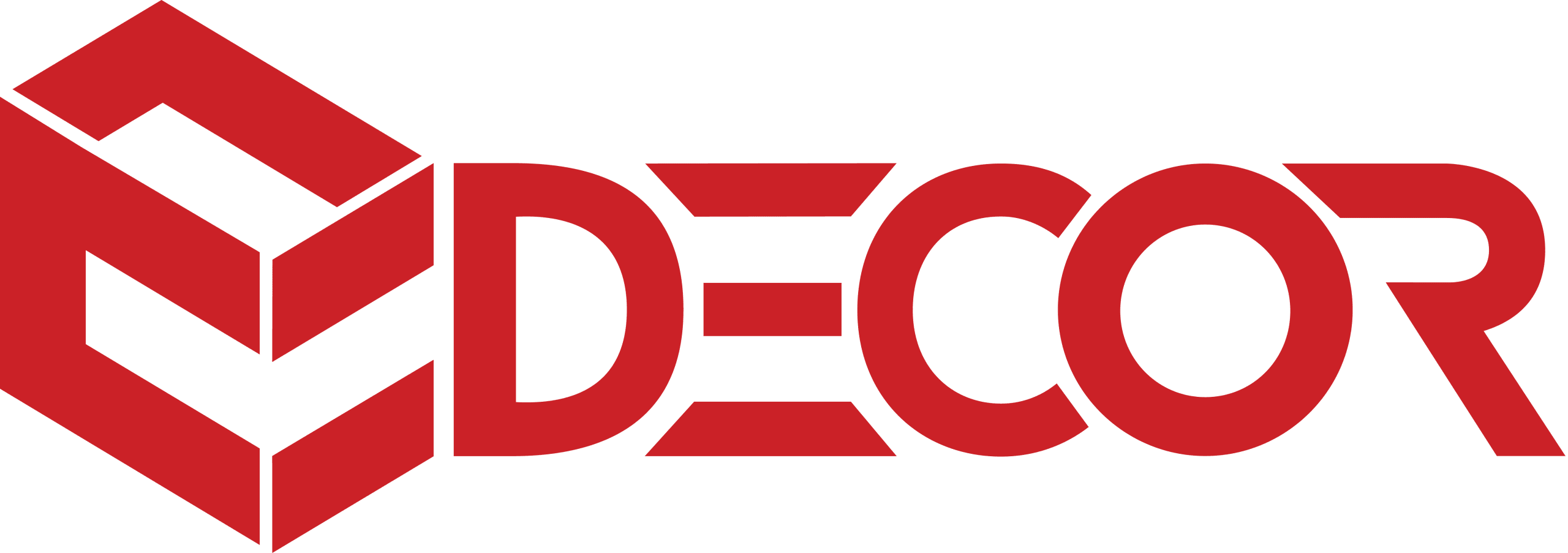In addition, the equipment must also be recorded within total assets on the balance sheet. Revenue expenditure refers to spending incurred in the normal course of business operations to generate revenue or what is fixed cost maintain day-to-day activities. These expenditures are short-term and fully consumed within a single accounting period. Capital expenditure (CapEx) refers to the spending incurred to acquire, enhance, or extend the life of fixed assets. The cash flow statement (CFS) reveals capital expenditures in its investing section, showcasing all cash flows for a specific period. When a company acquires equipment, they display the cash outflow on the CFS and include the equipment in their total assets on the balance sheet.
The concept of revenue expenditure means the funds that a company or organization spends on its day-to-day operational activities and expenses necessary for the maintenance of regular business operations. It includes costs such as employee salaries, utility bills, rent, maintenance expenses, raw materials, marketing expenses, and administrative expenses. Unlike capital expenditure, which is used for long-term investments, revenue expenditure includes expenses incurred to support the ongoing operations and sustain the business. It impacts the daily operational expenses incurred to maintain the ongoing business activities, including costs for employee salaries, rent, utilities, and supplies. Effective management of revenue expenditure is crucial for ensuring financial sustainability and optimizing business profitability.
B. Impact on Profitability and Cash Flow
The exact classification within which a capital expenditure falls depends on the nature of the purchase, its useful life, and the amount involved. Proper classification ensures the financial statements accurately reflect the company’s financial position and performance. To put it differently, capital expenditure costs are distributed over several years, while revenue expenditure is expensed in the current period. It influences the preparation of financial statements, highlighting the importance of accurately reflecting the company’s financial position and performance. It also provides valuable insights into the allocation of resources and facilitates decision-making processes concerning cost management strategies. These implications underscore the significance of accurately recording revenue expenditure for sound financial evaluation and effective cost management.
All About Investment Concepts on smallcase –
- In financial analysis, monitoring and controlling these expenses is crucial for assessing the return on investment and evaluating the effectiveness of various marketing strategies.
- Mismanaging these costs can lead to liquidity issues, reducing the company’s ability to meet short-term obligations.
- Accurate classification ensures reliable financial reporting, tax compliance, and effective decision-making, supporting the long-term growth and sustainability of the business.
- Now that we have a clear definition and distinction, let’s explore some common examples of revenue expenditure.
- One of the expenses that are not as talked about is the concept of making international payments.
By doing so, a business is using the matching principle to link the expense incurred to revenues generated in the same reporting period. Inventory expenses represent essential elements of revenue expenditure, impacting financial management and business efficiency in maintaining adequate stock levels for ongoing operations. Rent and utilities constitute vital components of revenue expenditure, reflecting the operational costs and routine expenses incurred in sustaining business operations.
Managing expenses is a critical aspect of financial management for businesses and organizations. Revenue expenditure forms a significant part of these expenses, involving day-to-day operational costs and expenses necessary to sustain regular business activities. A capital expenditure refers to any money spent by a business for expenses that will be used in the long term while revenue expenditures are used for short-term expenses. Capital expenditures represent significant investments of capital that a company makes to maintain or, more often, to expand its business and generate additional profits. CapEx consists of the purchase of long-term assets, which are assets that last for more than one year but typically have a useful life of many years. For example, the property rent for a building, which is a revenue expenditure, ensures daily functioning and provides no returns in the future.
B. Tax Implications
It is important for companies to accurately classify their expenditures in order to provide a clear and accurate representation of their financial health. This type of spending is often used to buy fixed assets, which are physical assets such as equipment. As a result, capital expenditures are typically for larger amounts than revenue expenditures. However, there are exceptions when large asset purchases are consumed in the short term or the current accounting period.
Recorded on the income statement, revenue expenditures, or operating expenses subtract from a company’s sales revenue, arriving at its net income or profit. Revenue expenditure is reflected as an expense on the income statement, directly impacting financial performance and necessitating accurate cost accounting for effective financial management. These expenses are crucial for supporting ongoing business activities and financial performance. For instance, maintenance and repairs ensure that equipment, machinery, and facilities are in good working condition, maintaining the production or service delivery process. Likewise, utilities and insurance costs are essential for maintaining a safe and functional working environment and mitigating potential risks. Revenue expenditure refers to expenses incurred in the normal course of business to generate revenue or maintain daily operations.
Benefits of Revenue Expenditure
- These expenses are crucial for supporting ongoing business activities and financial performance.
- If a company is spending too much on day-to-day operations, it may need to re-evaluate its strategies, negotiate better deals with suppliers, or look for ways to reduce operating costs.
- Revenue expenditure refers to spending incurred in the normal course of business operations to generate revenue or maintain day-to-day activities.
- Revenue expenditure provides insight into how efficiently a company is using its resources.
- It is crucial to differentiate between revenue expenditure and capital expenditure, as this distinction impacts how the expenditures are recorded and reported in the financial statements.
For example, the purchase of a fixed asset is categorized as an asset and charged to expense over multiple periods, account receivable turnover definition to match the cost of the asset against multiple future periods of revenue generation. On the other hand, capital expenditure involves significant investments in assets or infrastructure that provide long-term benefits to the business. These costs are typically capitalized and amortized over their useful lives, reflecting their lasting impact on the company’s operations.
Articles
It impacts the net income and taxable income, influencing tax liabilities and cash flow. On the other hand, revenue expenditure represents the funds spent on day-to-day operational expenses required to maintain the business and generate immediate revenue. These expenses are typically recurring and do not result in the acquisition of long-term assets. Examples of revenue expenditure include rent, utilities, employee salaries, advertising costs, and raw material expenses. Revenue Expenditure refers to the amount spent whose benefit is either received or exhausted within the accounting period. It can be said that any expense that is not a capital expenditure is a revenue expenditure.
Conversely, they spread the cost through yearly depreciation over the asset’s useful life. Tracking revenue expenditure allows a company to analyze its spending and identify areas where cost-cutting measures can be implemented. These expenses play a pivotal role in shaping a company’s brand image and influencing consumer behavior. Businesses allocate significant resources to advertising and marketing to increase sales and customer acquisition. In financial analysis, monitoring and controlling these expenses is crucial for assessing the return on investment and evaluating the effectiveness of various marketing strategies.
Revenue expenditure holds significant importance in maintaining the financial health of a business, playing a critical role in efficient business management and internal control processes. Registration granted by SEBI, membership of BASL (in case of IAs) and certification from NISM in no way guarantee performance of the intermediary or provide any assurance of returns to investors. The examples and/or scurities quoted (if any) are for illustration only and are not recommendatory. It requires businesses to implement budgeting techniques and closely monitor their spending to ensure costs are within the allocated limits. This calculation will provide you with the total amount spent on revenue-generating activities during the specified period. Companies often use debt financing or equity financing to cover the substantial costs involved in acquiring major assets for expanding their business.
Effect on Profitability
Understanding such real-world examples aids businesses in making informed decisions regarding their revenue expenditure strategies, ensuring fiscal responsibility and long-term sustainability. Revenue expenditure provides a clear picture of the ongoing costs required to operate a business. By tracking these expenditures, businesses can create more accurate budgets and financial plans. This allows for better forecasting and resource allocation, ensuring that companies can meet their financial targets. Now that we have a clear definition and distinction, let’s explore some common examples of revenue expenditure. These are typical operating costs that a business will incur regularly to maintain operations.
This article delves into the differences between capital expenditure and revenue expenditure, their characteristics, and practical examples. They ensure that the business continues to operate efficiently while generating income. Proper understanding and classification of revenue expenditures, deferred expenditures, and their differences from capital expenditures are essential for accurate accounting and business sustainability. The difference between capital and revenue expenditure is crucial for effective financial management and resource allocation.
The costs of routine maintenance and what is irs form w repairs that are required to keep an asset properly functioning without significantly enhancing or extending the asset’s useful life are also included in it. It allows businesses to monitor their regular expenses and assess their impact on the bottom line. By carefully analyzing financial statements, companies can identify trends in revenue expenditure and make strategic adjustments to improve profit margins.
By keeping track of revenue and expenses, a company is better able to analyse and forecast the financial health of its operations. Businesses can determine which costs will take longer to pay for themselves if they have a better understanding of it. As a result, it is useful for companies to identify expenses that are unnecessary or those that could put unnecessary pressure on their liquidity. Now that we’ve established the meaning of revenue expenditure, let’s explore the types of revenue expenditures.
The key characteristic of revenue expenditure is that it does not create any long-term assets, nor does it result in the increase of the value of any existing assets. For instance, a company’s capital expenditures include things like equipment, property, vehicles, and computers. Revenue expenditures, on the other hand, may include things like rent, employee wages, and property taxes. Since long-term assets provide income-generating value for a company for a period of years, companies are not allowed to deduct the full cost of the asset in the year the expense is incurred. Instead, they must recover the cost through year-by-year depreciation over the useful life of the asset. Expenditure on tangible assets like the purchase of land, vehicles, tools, and machinery and intangible assets like patents and licences are not considered revenue expenditures.
These expenditures are short-term and are fully consumed within a single accounting period. These assets are generally meant for the long term (generally longer than a year) and include property, equipment, and vehicles. Some industries, such as the telecommunication sector and the oil/gas industry, have higher CapEx spending. Revenue expenditures are short-term expenses used in the current period or typically within one year. Revenue expenditures include the expenses required to meet the ongoing operational costs of running a business and thus are essentially the same as operating expenses. A revenue expenditure is a cost that is charged to expense as soon as the cost is incurred.




 Round Rugs
Round Rugs  Wool Rugs
Wool Rugs  Vintage Rugs
Vintage Rugs 


 Carpet Tiles
Carpet Tiles  Carpet
Carpet 
 Embossed Rug
Embossed Rug  Plain Rug
Plain Rug 
 2.5'*4'
2.5'*4'  2'*3'
2'*3'  3'*5'
3'*5'  5*7.5
5*7.5 













 Artificial Grass
Artificial Grass  Mats
Mats 
 Soil
Soil  Fertilizer
Fertilizer  Pesticides
Pesticides